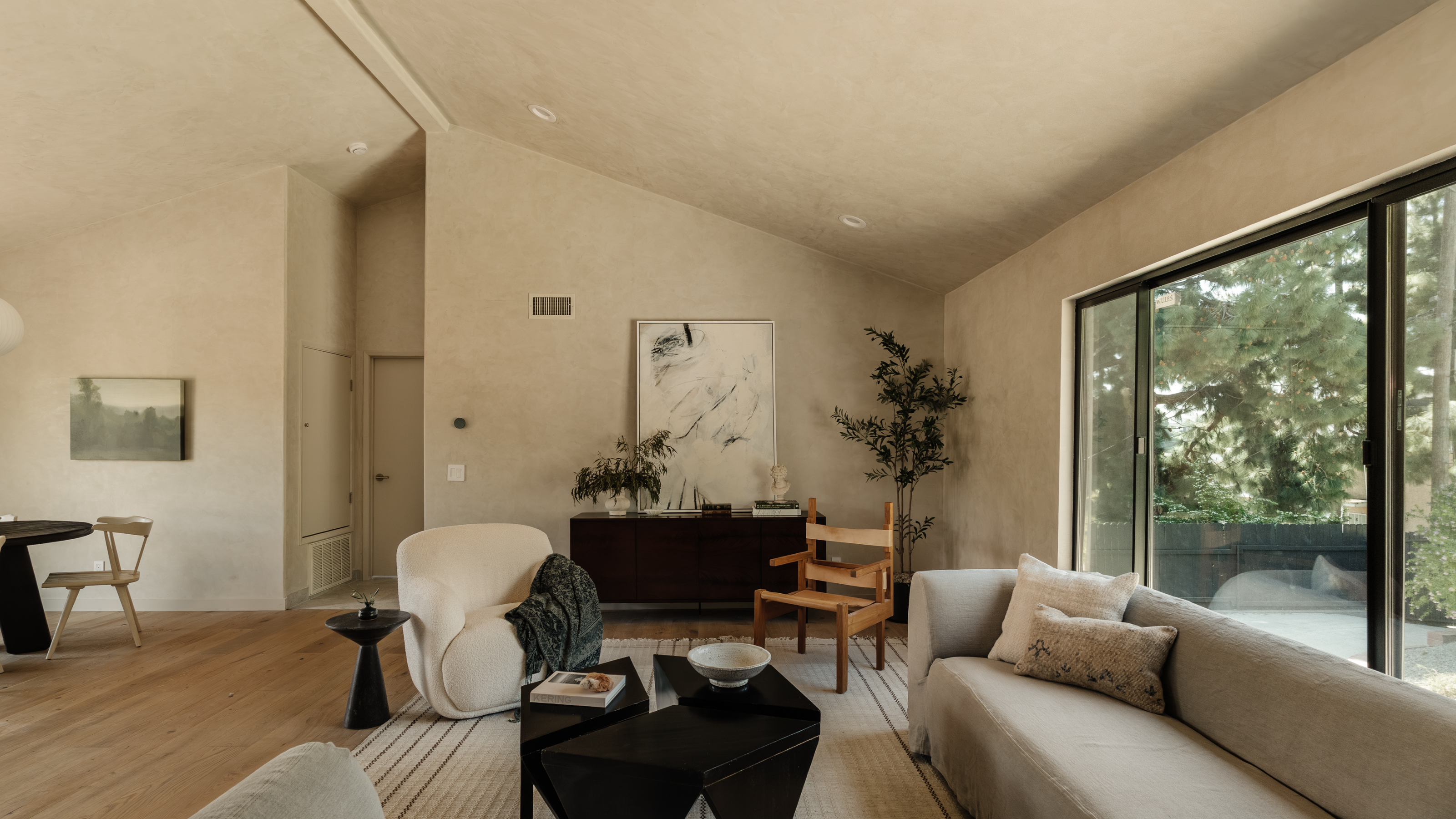
Take a look at your walls. Too often they're a forgotten design detail in our homes. Painted drywall, a bit of brick, maybe a panel detail or two... But if you're looking for ways to make a real statement with these surfaces, it's worth tossing up between Venetian plaster vs microcement.
But what are they? Both ways to bring texture to walls, they share a lot of similarities. "They're both durable, both hardwearing, both have large lifespans once installed, both have easy maintenance, and both add value to the home," explains Tom Power, founder of Italiwalls and an expert in Venetian plaster.
But there are also subtle differences — particularly as it relates to aesthetics, durability, sustainability, and cost. So, to help you make the call on Venetian plaster vs microcement, we spoke to two experts in the trade. Here's what they shared to help you choose a style that will suit your home.
What Is Venetian Plaster?
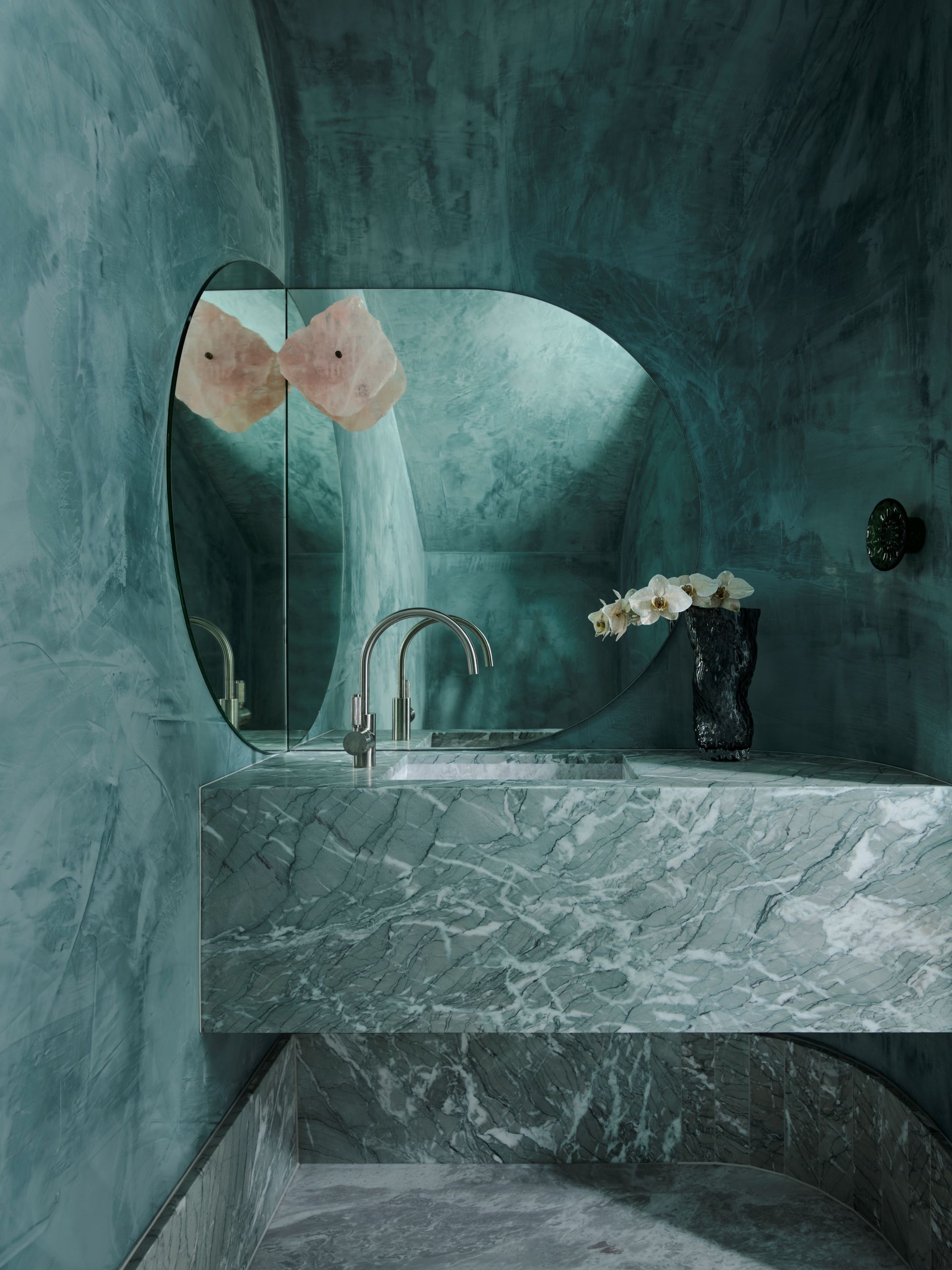
Venetian plaster is a natural product that has been used in interiors for centuries. It gained popularity in — you guessed it — Venice, Italy, during the Renaissance and has since been frequently used in interior design.
"Its initial use as an architectural finish can be traced as far back as Ancient Rome in around 500 BC, with many buildings using the same decorative surface material still intact today," explains Duncan MacKellar, executive technical and creative director at Armourcoat, a luxury paint finish company. "This demonstrates its inherent durability in the right conditions, and when duly maintained."
It's a natural, artisanal finish that is hand-applied to surfaces. "It's made with a lime and crushed marble mix, and is tinted to your desired color with pigments," adds Tom Power.
When comparing the durability of Venetian plaster vs microcement, Venetian plaster can be a little more delicate than microcement, which means it's best used in lower traffic areas, and outside of wet rooms.
In terms of application, Venetian plaster is slightly more straight-forward than microcement (although it's still best done by a professional). It typically involves applying three coats, but doesn't need as much sanding, says Tom. "It still requires sealing and protecting," he adds, which can be done using natural materials like beeswax (or a water-resistant sealer if you're using it for something like a kitchen backsplash).
Considering it's made of all natural materials, Venetian plaster is also considered to be a sustainable wall finish. "At Armourcoat, we offer a range of Venetian Plaster finishes we refer to as Polished Plaster, which are made using zero VOCs to ensure minimal environmental and health impact," says Duncan.
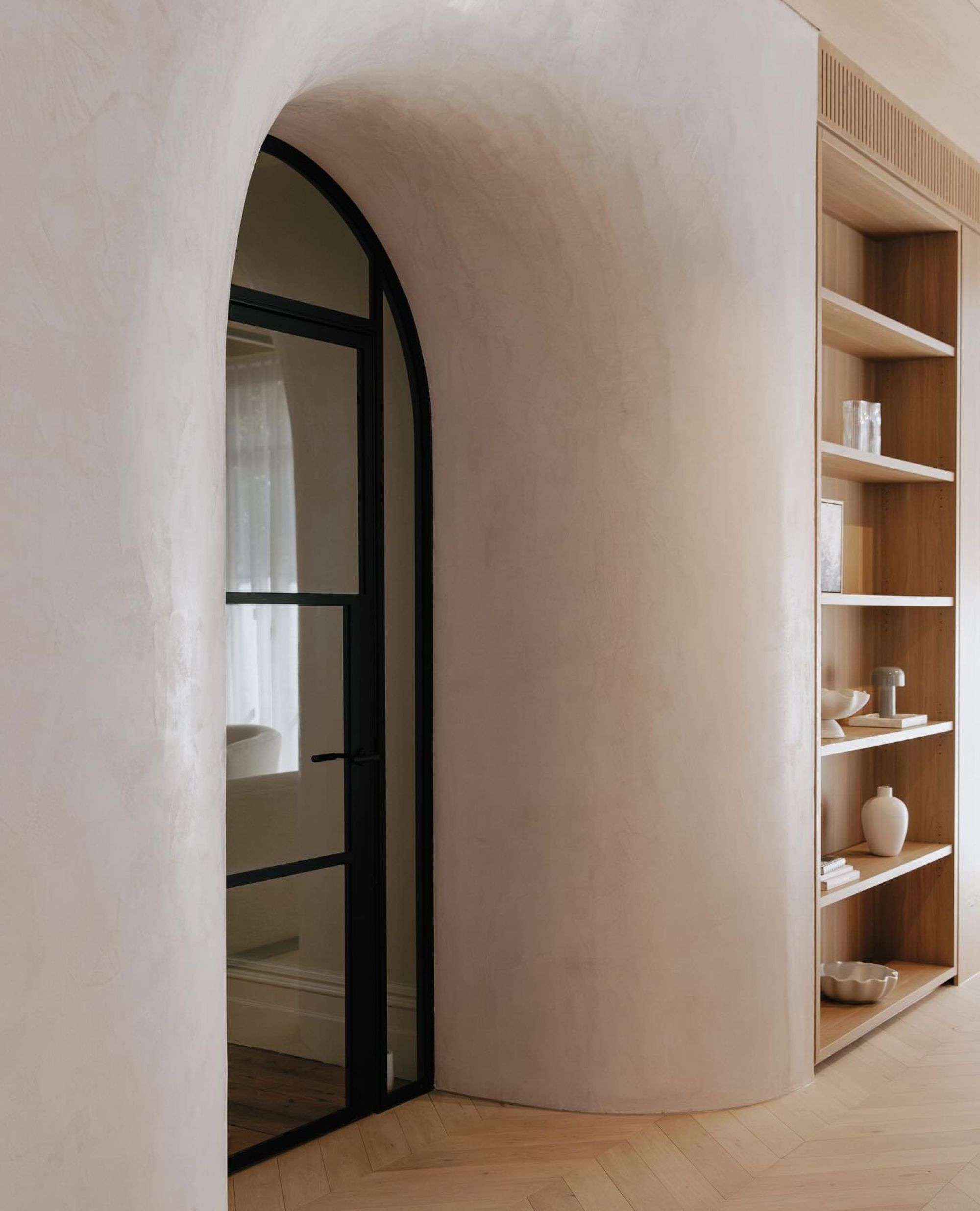
There are several different types of Venetian plaster like Marmorino, Travertino, and Grassello — all of which can effect the overall look of the finish on your walls. "If you want a traditional subtle organic look, you have Marmorino," says Tom.
But if you're craving the neutral and textural look of travertine, opt for Travertino. "The list of options continues, meaning we can match a client's specific interior, desire, or texture much easier," Tom says.
What is Microcement?
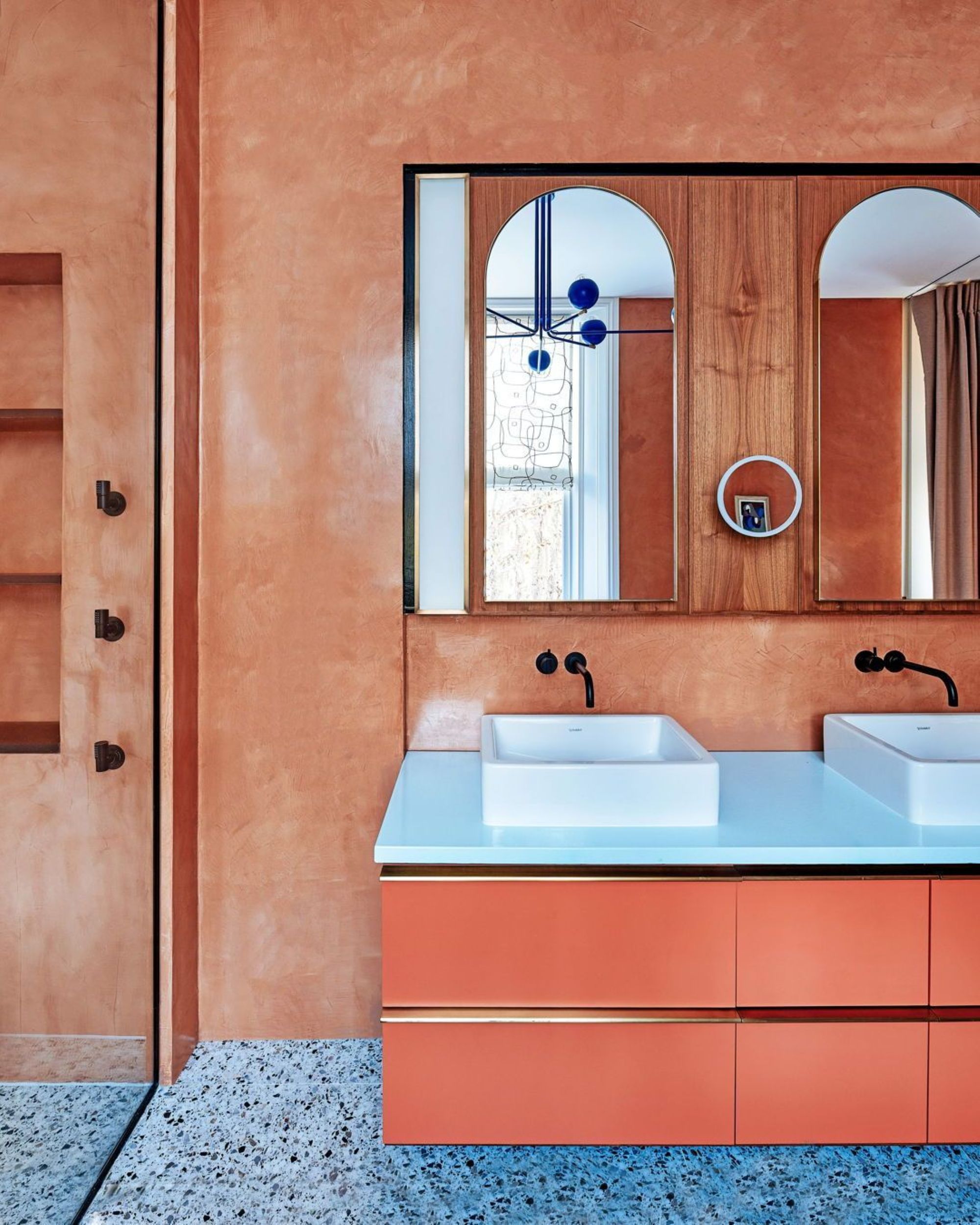
So what is microcementing, and, importantly, how does it compare to Venetian plaster? Due to its incredible durability as a finish, microcement differs from plaster in that it can also be applied to floors.
Aesthetically, it's particularly popular amongst those who favor an industrial interior design style, though it can be adapted for a wide range of looks.
The application process can be a little bit more complex to Venetian plaster, too, Tom explains. "Multiple layers, specific sanding processes, multiple component sealers, and varnishes to protect the plaster," are required, he says.
But, considering its innate durability and water resistance, it won't show stains or scratches easily (a big win in the Venetian plaster vs microcement debate). Because of this, "[it's] typically used for wet rooms, bathrooms, and floors for heavy traffic or commercial spaces," says Tom.
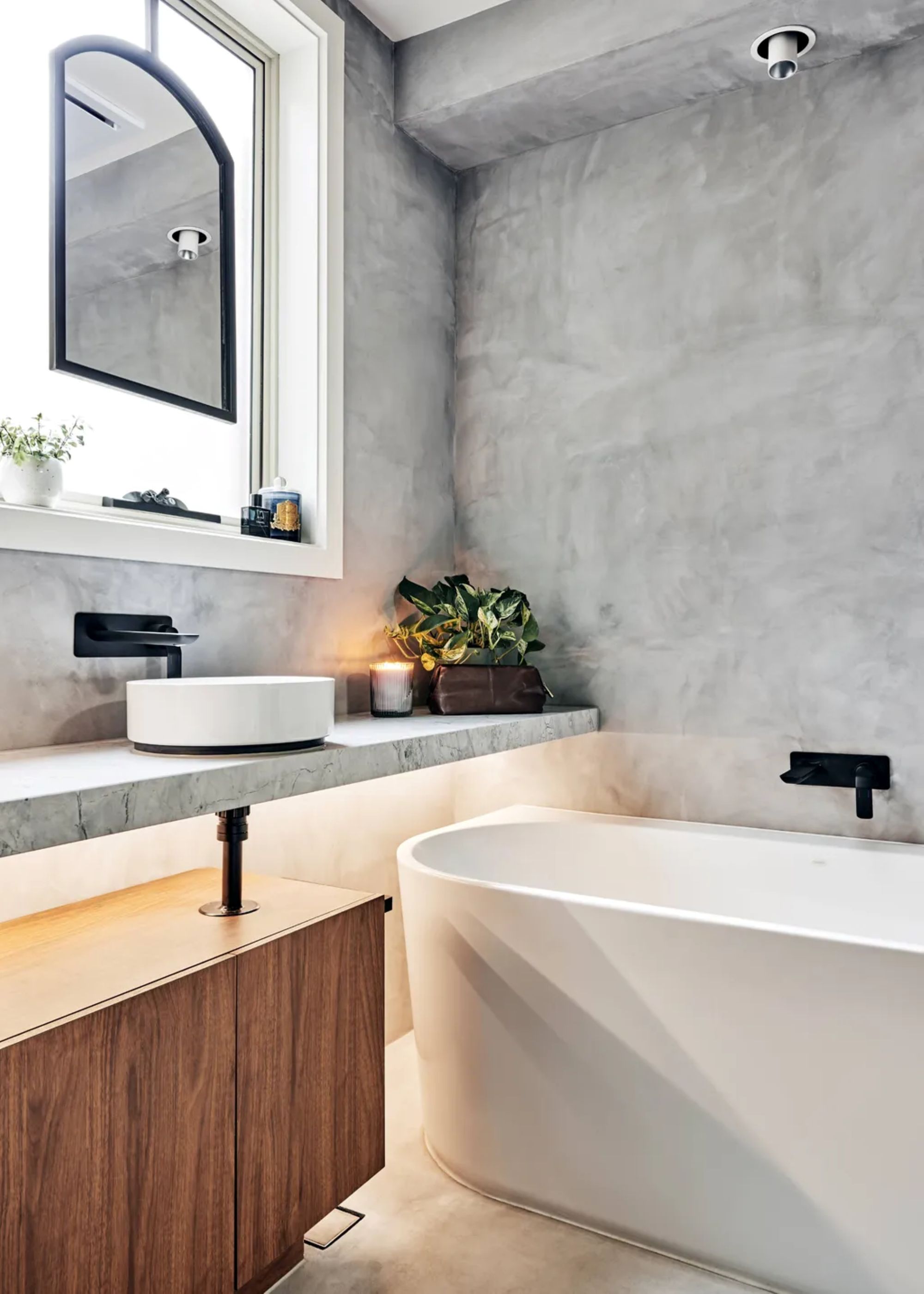
Sustainability-wise, "Microcement surfaces are made using cement and a polymer resin binder combined with a fine sand or stone aggregate and inherently have a higher environmental impact versus traditional Venetian Plaster," explains Duncan.
But although it's a synthetic material, microcement is still a highly functional and beautiful finish, according to Tom. Aesthetically, he compares its look to that of Marmorino Venetian plaster — with its "matte, subtle, and organic look and feel."
"Microcement tends to have one main look, which is smooth, natural, and a seamless aesthetic," Tom tells me.
So, Venetian plaster vs microcement?
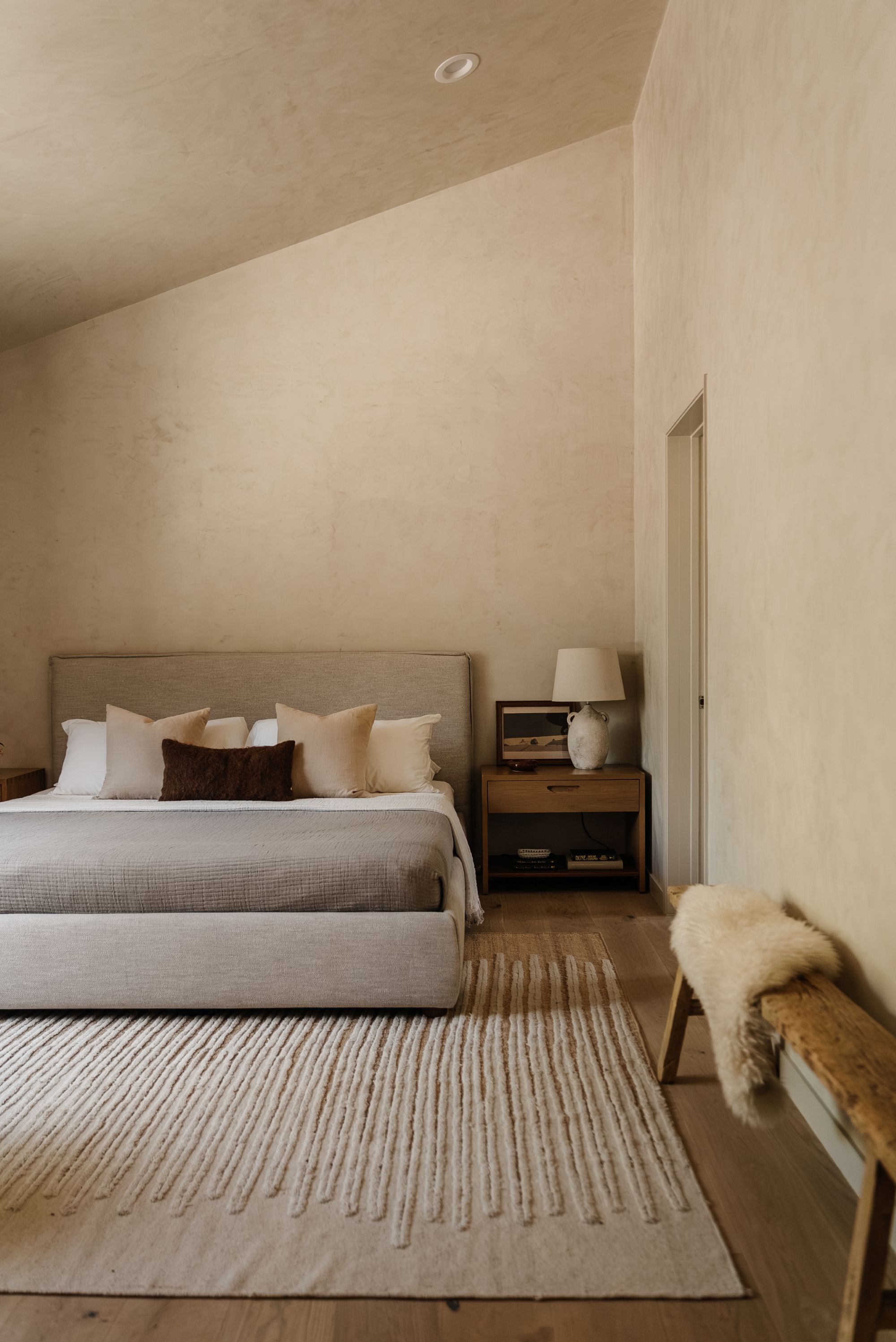
So, when it comes to Venetian plaster vs microcement, there are a lot of similarities between the two. But there are also some big differences. "Although microcement and Venetian plaster can look somewhat similar from a distance, they differ quite distinctly in terms of aesthetics, durability, sustainability, and cost, due to the inherent properties of the raw materials and application methods," says Duncan.
"Although broadly speaking Venetian Plaster surfaces require more skilled application techniques, microcements can often end up being more expensive overall, owing to the many layers and sealers required in their application," he adds.
Aesthetically speaking, both Tom and Duncan agree that Venetian plaster provides a more sophisticated look, as well as a wide range of finishes, "ranging from smooth or high-gloss polished finishes to soft-matte stone styles," says Duncan.
But, where microcement wins out is in terms of durability. "If it’s an interior space with high traffic, floors, wet areas, or a specific requirement for high levels of durability then we will always recommend micro-cement," says Tom.
So it seems when it comes to Venetian plaster vs microcement, it's less a question of which, and more a question of where, that will help you determine your best answer.
Still can't decide between Venetian plaster vs microcement? You might also want to take a look at Tadelakt, a Morrocan lime plaster that's naturally water-proof and incredibly beautiful.







